Many of the world’s deep sea eco-systems can now be accessed and examined in-situ thanks to technological advances made in Saab Seaeye’s range of underwater robotic systems and subsea tooling. New ground-breaking designs and control architecture ensure that these solutions can not only master strong currents and tides and harsh conditions but can also be geared to perform delicate analytical tasks where accuracy and minimum intervention is of utmost importance.
Further developments made in transformative robotics and tooling as found in Saab Seaeye’s Falcon and Leopard vehicles are making a wider range of marine science tasks more possible.
Studies in Japan by Kaiyo Engineering are using the Leopard to examine biodiversity surrounding hydrothermal vent activity in order to protect the inter-connecting ecosystems around mineral extraction sites. Other tasks will further exploit the advanced capabilities of the Leopard and Falcon. One such task is to enhance the tsunami early warning seismographic monitoring system on the sea floor and install 45 kilometers of new sensors and transponders.
The 3000m rated Leopard uses iCON, a highly advanced plug and play system of distributed control developed by Saab Seaeye, which allows more interchangeable tooling and survey sensors to be installed than ever before on a vehicle of its size.
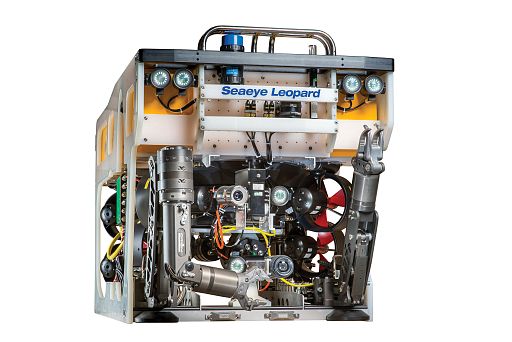

The 3000m rated Leopard is the most powerful electric underwater e‐robotic system in its class, making it ideal for complex and demanding scientific tasks.
Each device on the vehicle has its own microprocessor which allows scientists, when faced with the risk of multiple equipment damage during remote location operations, to remain on task as iCON will independently manage each intelligent device on the vehicle to keep the vehicle working with minimum disruption. Maintenance and general condition of the vehicle can also be monitored through remote diagnostics to anywhere onshore.
In Israel, The Saab Seaeye Leopard is being used by the University of Haifa as a key resource for a new deep sea research centre. The Leopard’s 11-strong thruster power and iCON intelligent control architecture allows scientists to handle a variety of systems of heavy and variable loads by providing flight stability, including pitch and roll stabilisation even in strong cross currents and also gives them precise manoeuvrability inside complex structures.
In addition, the Leopard’s iCON building-block capability and large open payload bay with sliding trays for rapid reconfiguration and easy maintenance allows more interchangeable tooling and survey sensors to be fitted than ever before possible in a vehicle of its size.
“We opted for the Leopard, not just because of its technological excellence and Saab Seaeye being the largest manufacturer of electric ROVs in the world, but because universities and scientific users we contacted gave Saab Seaeye the best and most positive feedback.”
Ben Herzberg, Chief Engineer
The Helmsley Charitable Trust Mediterranean Sea Research Center
Leon H Charney School of Marine Sciences at the University of Haifa.
Saab Seaeye’s smaller e-robotic vehicle, the Falcon, is globally renowned for its performance, reliability and compact footprint and is an ideal platform for intricate and demanding marine science applications.
In the USA, a Saab Seaeye Falcon is being deployed by Northwestern Michigan College to evaluate systems integration for the marine industry and the effect on underwater performance when different equipment is added. The distributed intelligent control architecture makes it straightforward to add and change a variety of systems including manipulators, cutters and cameras – many of which are included in Saab Seaeye’s Hydro-Lek range of tooling.
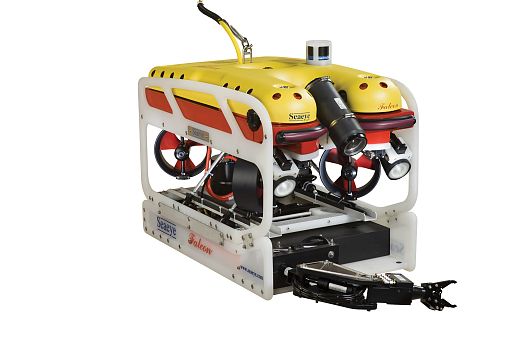
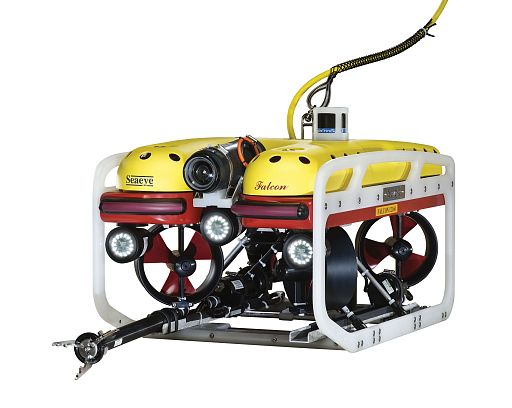
Recent research undertaken by the University of Stanford for biological sampling on deep reefs deployed a Saab Seaeye Falcon with a Hydro-Lek arm and valve packs. By adapting the metal gripper on a Hydro-Lek 5 function arm with a soft robotic gripper, scientists were able to delicately manipulate and collect fragile biological specimens on the deep reef without destroying benthic fauna.
Many marine science applications deploy Saab Seaeye’s range of Hydro-Lek subsea tooling such as cutters, water jetters, and camera booms as well as ROV power components including valve packs, HPUs and telemetry systems.
Hydro-lek’s 6000m rated robotic underwater vehicle, HyBIS has been kitted out with a range of these tooling options and deployed by the UK’s National Oceanographic Centre on various research expeditions to the Mid-Atlantic ridge to explore ocean floors mineral deposits. HyBIS was originally deployed in 2009 when it was used to discover, film and sample the world’s deepest hydrothermal vents – some 6000m deep – in the Cayman Trench. These vents are considered to be the highest pressure, hottest and most copper-rich seafloor hydrothermal systems known to date.
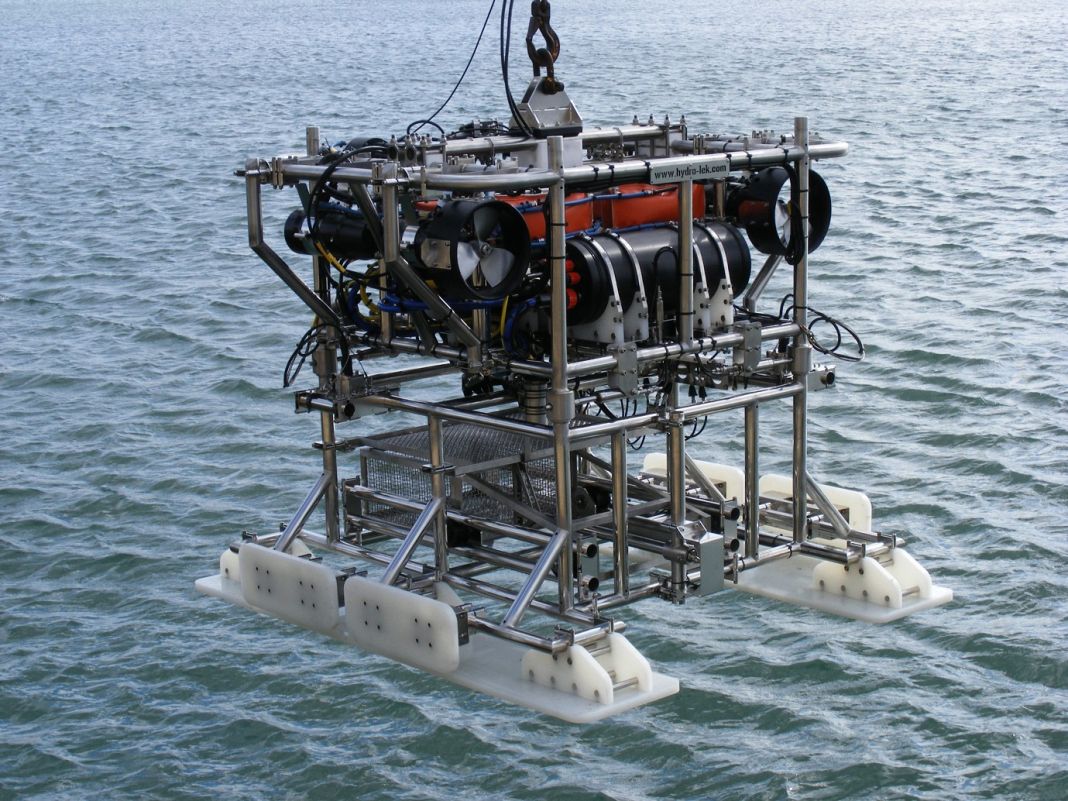
HyBIS has also been adopted by leading institute in marine science, Geomar Helmholtz Centre for Ocean Research Kiel, to successfully deploy Ocean Bottom Seismometers (OBS) and Ocean Bottom Eletromagnetometers (OBEM) off the west coast of Svalbard in Norway to measure the widespread nature of gas hydrates and free gas accumulations.
In addition to designing and producing standard tooling for marine research, Saab Seaeye also designs bespoke tooling skids for a wide range of underwater vehicles on the market, along with a comprehensive range of subsea hydraulic components.
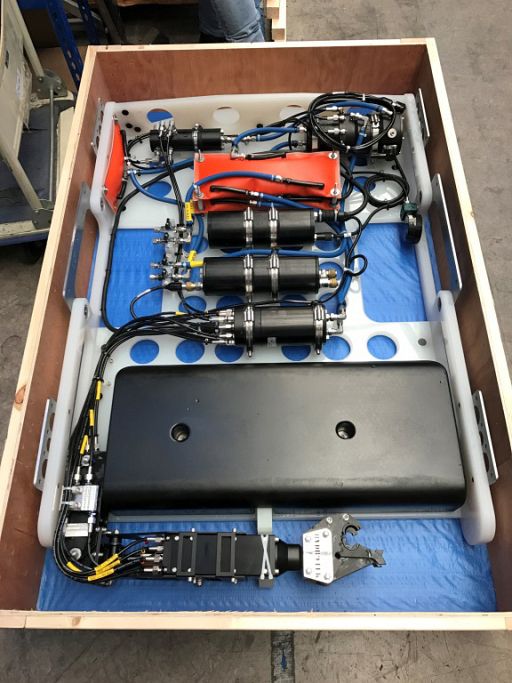
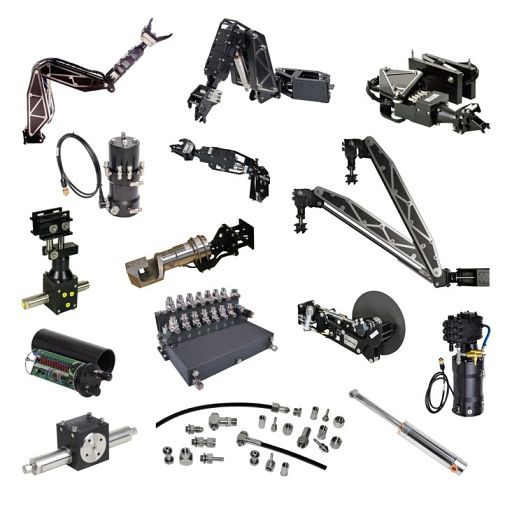
Example of Hydro-Lek tooling skids (left) and range of tooling components (right)